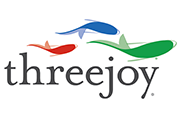Creativity Is vs. Creativity As
In developing a course at the University of Illinois on Modeling for Tech Visionaries, I did two lectures on creativity. The Powerpoint slides from the first lecture are presented in the viewer below or may be viewed on the slideshare page here.
[slideshare id=55929&doc=what-is-creativity-55929-26002]
Slides numbers 5 and 6 have dictionary definitions of the term “creativity,” and for this post, I’ll call this the creativity is perspective. In other words, when we give a definition we are trying to nail down a concept or term and describe exactly what we mean by it. Unfortunately for such attempts at precision, terms such as “creativity” are overloaded with meaning, and attempts to say what creativity “is” almost always fall short.
As a result, I chose to take a different approach in my two lectures on creativity. I intentionally chose to view the term from different perspectives. In other words, I adopted a creativity as approach. In the ppt in the viewer, for example, I considered creativity (1) as individual thought process. (2) as group brainstorming. (3) as socially enabled/mediated process. (3) as history. (4) as generative vision. (5) as heuristic inventive process, and (6) as eliminating resistance/blocks. By choosing to view creativity as not a single thing, but rather as a multifaceted concept, I was able to explore it more fully, hopefully getting closer to a fuller understanding of what the complex term “creativity” is really all about.
Of course, taking this approach is not limited to the term “creativity.” The next time you are having difficulty getting your hands around a complex concept or term, try the trick of substituting “as” for “is.” You can then explore different facets of the term–X as Y, X as Z, and so on–asking “What else?” after each exploration, and in this way you get a fuller understanding of the larger concept. This can be especially helpful in multidisciplinary settings where terms are oftentimes used quite differently in different disciplines. Breaking the logjam of disciplinary expertise requires exactly this relaxation of the expert’s certainty that his or her discipline or profession has the received truth, thereby allowing him or her to listen to how others with different expertise use the same word.
Try it, substitute “as” for “is” and explore the richness of different perspectives, today.






